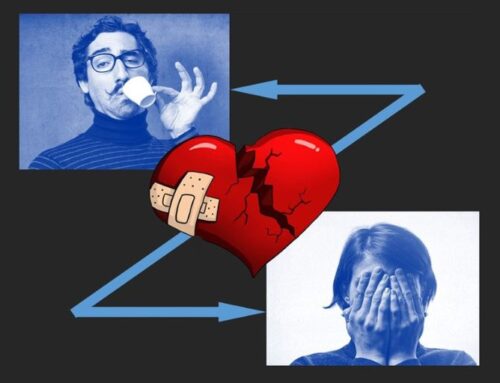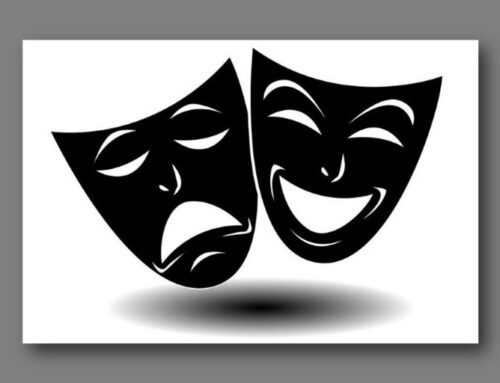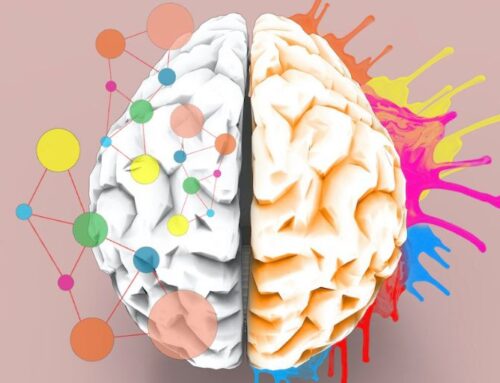In another blog piece I address the issue of Good Shame vs Bad Shame. The “good” shame affect (or emotion) is hardwired into us. It’s an evolutionary survival mechanism that keeps us connected to the group that we rely on for our survival. That means that when we infringe group norms, then we get a physical reaction that tells us “we done wrong”. This in and of itself is not bad or wrong.
We need to conform at least to some extent to group standards, because in evolutionary terms, exclusion from our group spells death. On the Serengeti Plain in East Africa, where we evolved as a species, when you infringed group norms, it meant exclusion from the group and that very likely meant physical death.
Shame becomes a problem, when we have the same biologically-based shame reaction to situations where our real or imagined wrong-doing have nothing to do with our physical survival. This is because our brains haven’t caught up with the fact that the ‘threats’ that we face in our present-day world are substantially different than those that our hominid ancestors faced on the Serengeti.
It’s true that the built-in shame reaction does still serve a good purpose (when know when “we done wrong” for real and then seek ways to make things right), but it can also cause us a lot of unnecessary suffering, when our wrong-doings are exaggerated, even imagined or remain unresolved. We then engage an endless cycle of self-shaming. Or when others punish us through shame, that then can evolve into a cycle of toxic self-shaming.
The Compass of Shame (developed by Donald Nathanson) in the Good Shame – Bad Shame blog piece explains how we typically deal with toxic shame – internalized shame that derives from intensified real or imagined wrong-doing. The behaviors or patterns of behavior described there are compensatory and they do nothing to help us resolve the toxic shame that is causing us so much grief.
Pointing the Compass Toward Healing
How you deal then with shame reactions might relate to what type of toxic shame you experience. So here are some possible ways forward:
♥ A good place to start is to see which behaviors you most identify with on the Compass of Shame: Withdrawal, Attack Self, Attack Other or Avoidance. Shame can be expressed in one or more of these ways.
♥ Notice the ways you might have, for example, withdrawn (Withdrawal) or engaged in avoidance behaviors (Avoidance) or turned your anger toward others (Attack Other) or the number of ways you Attack Self (put yourself down, demanded perfection of yourself etc.).
♥ No matter where you fall on the Compass, it’s important to see yourself with compassion. You are only human. Shame is a painful emotion and so you, just like the rest of us, find ways to “deal” however imperfectly. Forgiveness of yourself and others is key to setting yourself free.
♥ At the bottom of most toxic shame is very likely a wounded younger part of yourself, a part which hold all kinds of painful memories, some true and some false. Resolving those deeply held feelings and memories is helps to resolve toxic shame. Learning to care for that younger part of yourself is vital. Learning to self-sooth without drugs or other avoidance behaviors will, with time, bring peace.
♥ Seeing the truth or otherwise of those things that produce intense shame in you is a crucial starting place. Most if us over blow the importance of errors we’ve made. You’ve probably done the same. Or maybe you’ve internalized a sense of shame based on a faulty perception of yourself. Or you may have internalized and taken as true others’ judgements (real or perceived).
♥ And finally you need to identify and engage in new and healthier behaviors for dealing with your feelings of shame. For every direction on the compass there will be an action you can take to begin to heal the toxic shame reaction. It may be a good idea to seek help from a skilled professional if you find this hard to do on your own. Or, if for example, you avoid shame by using drugs, alcohol or engage in other addictive behaviors, taking a 12-step path to recovery (e.g. AA, GA, NA) is a wonderful way to begin to heal toxic shame.
“By making the previously unseen seen we begin to heal our shame.”







